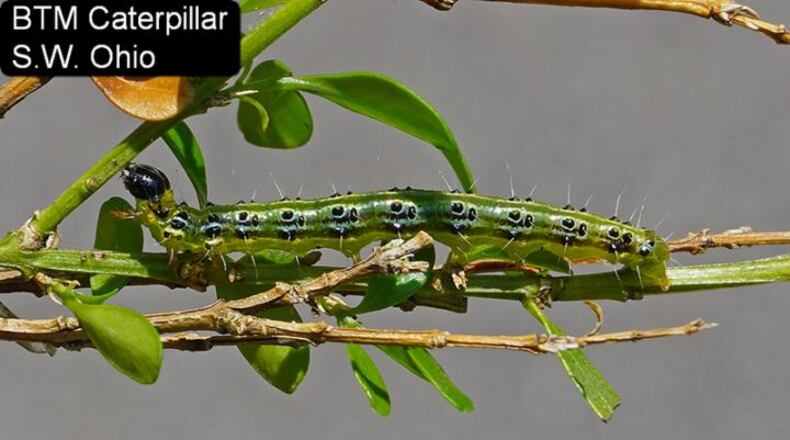We got rain the week before but less than a 10th of an inch. It wasn’t enough to even wet the top layer of soil. I was pulling weeds on Monday and the soil was bone dry.
So, I will say again that we need rain, at least in my portion of the Miami Valley. A friend of mine said that they were digging holes for posts and the soil was dry down around three feet.
The rains we have been getting have been hit or miss. Much of the state needs rain.
On the other hand, the farmers aren’t complaining about how dry it is currently. There was quite a bit of harvesting going on this week.
Along with the dry weather, the soybean harvests, and other factors, fall invaders are showing up as I mentioned a few weeks ago. We are seeing more brown marmorated stink bugs than we have ever seen.
My son in the Beavercreek area has had them for several years; this is the first year that we are seeing quite a few on the screens and around the doors.
If you haven’t brought houseplants in by now, you should be doing it this weekend. I haven’t had time to get mine cleaned up and in the house, so thank goodness it’s been warm enough at night. They don’t tolerate temps dropping much below the 50-degree range at night.
The Ohio Department of Agriculture (ODA) announced last week another box tree moth (BTM) discovery in Montgomery County, in the Dayton area. It was first discovered at the border of Hamilton and Clermont counties, and then in Warren and Butler counties.
This invasive pest poses a threat to boxwoods because of its voracious appetite for the foliage. Because boxwoods are evergreens, they won’t tolerate complete defoliation.
Upon a discovery of BTM, ODA places traps in the area to survey the extent of the infestation. They also ask residents to be on the lookout for BTM, particularly if you live in the area where they have been discovered.
First, make sure you know what you are looking for. This is a caterpillar, and the feeding damage is much different than what we are seeing with Volutella stem canker, boxwood blight, and winter damage.
BTM completely defoliates down to the stems. If they have pupated, you will find the pupal cases in the area around the defoliated plant. You may also find them in the egg stage.
For details on BTM, go to agri.ohio.gov, search for Box Tree Moth and familiarize yourself with the pest. ODA also has a link for reporting if you think you found BTM.
For Ohio State University Extension Buckeye Yard and Garden onLine information on the pest go to bygl.osu.edu and search for Box Tree Moth.
Pamela Corle-Bennett is the state master gardener volunteer coordinator and horticulture educator for Ohio State University Extension. Contact her by email at bennett.27@osu.edu.
About the Author
